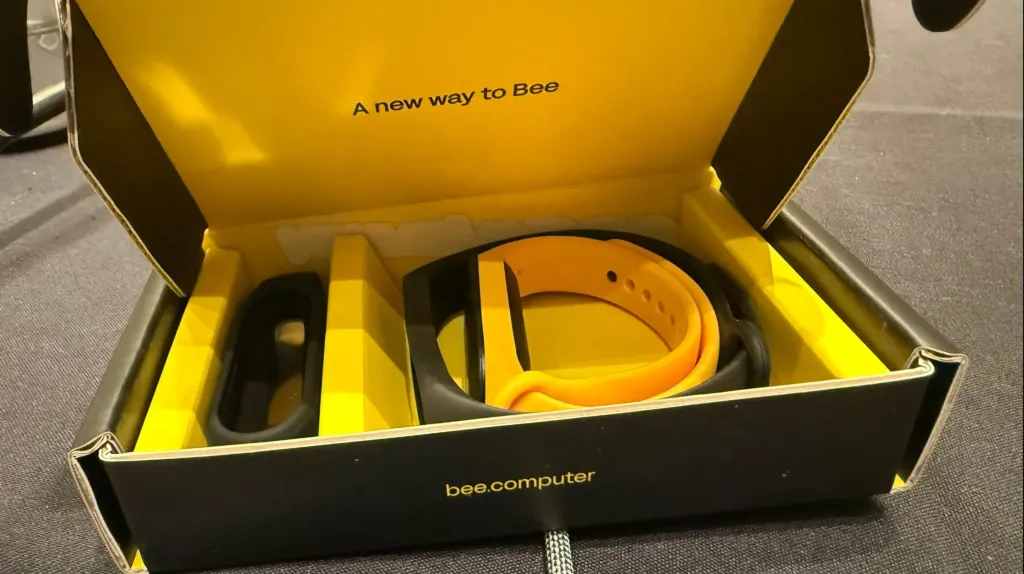Amazon buys an eavesdropping bracelet. Why are bigtechs entering the AI device race?
Analysts forecast a compound annual growth rate of 17% to 30% for the wearable device market

E-commerce leader Amazon buys startup Bee, which produces an AI bracelet that records conversations and creates to-do lists and reminders based on them. Thus, the owner of cloud storage AWS strengthens its position in the market of wearable devices with AI, where it will compete with Meta, Google and Apple.
Details
Online retailer and cloud storage owner Amazon is buying Bee, an AI bracelet startup. The deal was announced on LinkedIn by Bee CEO Maria de Lourdes Zollo. An Amazon spokesperson confirmed to The Wall Street Journal that the deal has been signed but has not yet closed. He did not disclose details of the deal, including the amount.
The Bee bracelet, which costs $50 and comes with a monthly subscription, listens to and records all of the user's conversations throughout the day. Then artificial intelligence in the cloud translates the recorded speech into text, highlights key events, and creates reminders and to-do lists. In other words, it behaves like a personal assistant. Bee raised $7 million in a funding round last year, writes Barron's.
Why Amazon would do that
"It's funny. Amazon has spent a decade convincing everyone that [its smart speaker] Alexa doesn't eavesdrop on your every word. And now the company is buying a wristband that can," wrote WSJ columnist Nicole Nguyen, who specializes in gadget topics.
Still, for the retailer, the deal is a small step toward a potentially huge market, Nguyen notes. The more data generative AI collects about the user, the more effective it is at solving everyday tasks, she says. "The more context about your life - the more useful such AI can be. And if enough of this data is collected, it will be useful for training the models themselves," she writes.
An Amazon spokesperson emphasized that the company places great importance on user privacy and security, designing products so that the customer is in control of their own user experience. The same will apply to bracelets and Bee, the company said.
What's happening in the smart wearable device market
Bee is just one of many new gadgets with AI. Google has the Pixel headphones with integration of a Gemini chatbot that talks to the user. Meta offers Ray-Ban glasses with a built-in AI assistant. Samsung recently introduced Gemini-enabled Galaxy devices. Apple is moving slower in this direction so far, but is also looking to introduce more AI features into the iPhone and Apple Watch. Apple's former chief designer Jony Ive is now developing a new wearable device with OpenAI.
Not all startups along these lines are successful. San Francisco-based Humane raised $241 million in investment in 2023 and released the $700 Ai Pin wearable computer. However, after a wave of negative reviews and user complaints about overheating, low battery life and other problems, the company scrapped the project and sold most of its assets to HP for $116 million.
The wearable devices that have come to market vary in form and function, but essentially serve the same purpose: to give the user simple and personalized access to a bot in the cloud. The idea behind all of these devices is that they could at least partially supplant the smartphone as the primary way to access AI on the go. As Apple remains slow to introduce AI features into the iPhone and its other devices, including the Apple Watch, competitors have a rare opportunity to gain a foothold in this user segment, notes Barron's.
How analysts estimate the market
The global Wearable AI devices market size was valued at $25.16 billion in 2024 and is expected to reach $160.87 billion by 2031 at a compound annual growth rate (CAGR) of 26.1%, consider researchers from Verified Market Research. According to alternative data from Maximize Market Research, the market for wearable devices with AI was valued at $42.5 billion in 2023 and is expected to reach $265.25 billion by 2030, exhibiting a compound annual growth rate of 29.9%.
A more modest forecast is given by Markets & Markets - its experts estimated the volume of this market at $62.7 billion in 2024 and expect growth to $138.5 billion by 2029 (CAGR 17.2%). All researchers concluded that the market leaders will be companies that can solve three main problems: to ensure the protection of personal data, increase the battery life of devices, and reduce their cost.
This article was AI-translated and verified by a human editor
